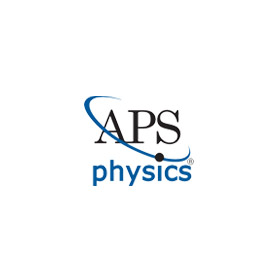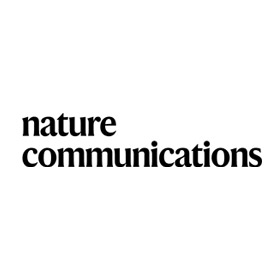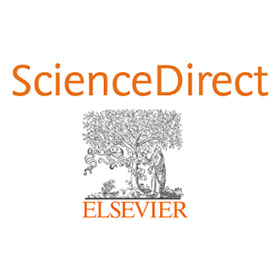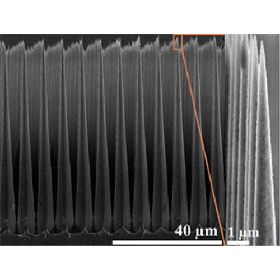Home | Publications | Research | Team | Contact |
Polarization-independent, narrowband, near-IR spectral filters via guided mode resonances in ultrathin a-Si nanopillar arraysNP
High spectral resolution plasmonic color filters with subwavelength dimensionsNP
Capillary Wicking in Hierarchically Textured Copper Nanowire ArraysNano
Optimizing the Design of Composite Phase Change Materials for High Thermal Power DensityNano
Broadband Electrically Tunable Dielectric Resonators Using Metal–Insulator TransitionsNP
Enhanced Capillary-Fed Boiling in Copper Inverse Opals via Template SinteringNano
Tailoring Permeability of Microporous Copper Structures through Template SinteringNano
Advancing semiconductor-electrocatalyst systems: application of surface transformation films and nanosphere lithographyNP

A fully-3D-printed complementary right/left-handed transmission lineERFM
Efficient solar hydrogen generation in microgravity environmentNP
Heterogeneously Integrated V-Band AmplifierERFM
Enhanced Heat Transfer using Microporous Copper Inverse OpalsNano
Experimental Characterization of Microfabricated Thermoelectric Energy Harvesters for Smart Sensor and Wearable ApplicationsNano
On the use of deep neural networks in optical communicationsQSM

Retrieval of all effective susceptibilities in nonlinear metamaterialsERFM
Additive Manufacturing for Full 3D RF StructuresERFM

Printable Materials for the Realization of High Performance RF Components: Challenges and OpportunitiesNano

The risk-sensitive coverage problem: Multi-robot routing under uncertainty with service level and survival constraintsCA

An SMT-based approach to secure state estimation under sensor and actuator attacksCA

Optical magnetism in planar metamaterial heterostructuresNESD
Dielectric Barrier Layers by Low-Temperature Plasma-Enhanced Atomic Layer Deposition of Silicon DioxideNano

Reconfigurable Composite Right/Left-Handed MetamaterialERFM
Bright Breathers in Nonlinear Left-Handed Metamaterial LatticesERFM
(Editor's Pick) High Breakdown Electric Field in b-Ga2O3/graphene vertical barristor heterostructureNano
The Team Surviving Orienteers problem: routing teams of robots in uncertain environments with survival constraintsCA

The matroid team surviving orienteers problem: Constrained routing of heterogeneous teams with risky traversalCA
Dense Aligned Copper Nanowire Composites as High Performance Thermal Interface MaterialsNano
Hyper-selective plasmonic color filtersNP
Atomically Thin Femtojoule Memristive DeviceNano

A Novel 3D-Printing-Enabled “Roller Coaster” Transmission LineERFM
Thermal homeostasis using microstructured phase-change materialsNP
Mapping Photoemission and Hot-Electron Emission from Plasmonic NanoantennasNP
Microscale Liquid Transport in Polycrystalline Inverse Opals across Grain BoundariesNano

Density matrix modeling of quantum cascade lasers without an artificially localized basis: A generalized scattering approachNSD
Vertical Charge Transport and Negative Transconductance in Multilayer Molybdenum DisulfidesNSD
On-Chip Ultra-High‑Q Silicon Oxynitride Optical ResonatorsNSD

W-Band InP HBT Power AmplifiersERFM
Method of preparing a polar based magnetic ink suitable for inkjet printing and characterization of Ni and Mn ferrite thin filmNSD
Accurately Controlled Squential Self-folding Structures by Polystyrene FilmNano

Heterogeneously Integrated W-Band DownconverterERFM

Closed-form controlled invariant sets for pedestrian avoidanceCA
Emulating Bilingual Synaptic Response Using Junction Based Artificial Synaptic DeviceNano
3D and aerosol-printed conductor-dielectric full-3D RF metamaterialsERFM

Direct On-chip 3D Aerosol Jet Printing with High ReliabilityNano
Aerosol Jet Printed Functional Nanoinks: From New Materials to RF ComponentsNano
(Invited) Efficiency limits for hydrogen and formate production via fully-integrated photoelectrochemical devicesNP
Supra-Nanoparticle Functional Assemblies through Programmable StackingNano
Spatial-Temporal Imaging of Anisotropic Photocarrier Dynamics in Black PhosphorusNano

The Team Surviving Orienteers Problem: Routing Robots in Uncertain Environments with Survival ConstraintsCA
Aerosol Jet Printed Functional Nanoinks with High Reliability and ReconfigurabilityNano
Experimental demonstration of >230° phase modulation in gate-tunable graphene-gold reconfigurable mid-infrared metasurfacesNP

Plasmonic hot electron transport drives nano-localized chemistryNESD

From Solitons to Rogue Waves in Nonlinear Left-Handed MetamaterialsERFM

W-Band InP Transmission Line MetamaterialERFM

A 2D Material based Gate Tunable Memristive Device for Emulating Modulatory Input-dependent Htero-synaptic PlasticityNano
How Light Is Emitted by Plasmonic MetalsNESD

Photon & Carrier Management Design for Non-Planar Thin Film CIGS PhotovoltaicsNP

Experimental and Ab Initio Ultrafast Carrier Dynamics in Plasmonic NanoparticlesNESD
Ambipolar Barristors for Re-configurable Logic CircuitsNSD
Angular-dependent photodetection enhancement by a metallic circular disk optical antennaNano

Trajectory generation for constrained differentially flat systems with time and frequency domain objectivesCA

Efficiency Limits for Photoelectrochemical Water-SplittingNP

Absorption Enhancing and Passivating Nonplanar Thin-Film Device Architectures for Copper Indium Gallium Selenide PhotovoltaicsNP

Low Symmetry 2D Materials for Electronic and Photonic ApplicationsNano

Near-Unity, Unselective Absorption in Sparse InP Nanowire ArraysNP

Enhanced Absorption and <1% Spectrum-and-Angle-Averaged Reflection in Tapered Microwire ArraysNP

3D Inkjet printed Ultra-wideband Equi-angular Spiral AntennasNano

Ab initio phonon coupling and optical response of hot electrons in plasmonic metalsNESD

Quantum PlasmonicsNESD
(Invited Review article) Modeling, simulation, and implementation of solar-driven water-splitting devicesNP

Impingement Cooled Embedded Diamond Multiphysics Co-DesignNSD
Feasibility of graphene CRLH metamaterial waveguides and leaky wave antennasNP
Cubic Nonlinearity Driven Up-Conversion in High-Field Plasmonic Hot Carrier SystemsNESD
Plasmonic hot carrier dynamics in solid-state and chemical systems for energy conversionNESD

Towards nanoscale multiplexing with parity-time-symmetric plasmonic coaxial waveguideNP
Embedded Diamond GaN HEMTsNSD
Examples of modern quantum sensing and metrology with new results on photon-added coherent statesQSM
Localized fields, global impact: Industrial applications of resonant plasmonic materialsNP

Electronic modulation of infrared radiation in graphene plasmonic modulatorsNP
(Invited) Integrated Nanomaterials for extreme thermal management: a perspective for aerospace applicationsNano
Emulating Bilingual Synaptic Response Using a Junction-Based Artificial Synaptic DeviceNano
Atomically Thin Femtojoule Memristive DeviceNano
Atomically thin CBRAM enabled by 2-D materials: Scaling Behaviors and Performance LimitsNano
Wafer Scale Synthesis of Thin Film Nanocrystalline Arsenic-Phosphorus via Molecular Beam DepositionNSD

Zero-static power radio-frequency switches based on MoS2 atomristorsNano
Fabrication of Ultra-Thin Si Nanopillar Arrays for Polarization-Independent, Spectral Filters in the Near-IRNP
Experimental Methods for Efficient Solar Hydrogen Production in Microgravity EnvironmentNP
Optimizing Photonic Nanostructures via Multi-fidelity Gaussian ProcessesNP
Wideband Curved Patch AntennaERFM
Receding-horizon multi-objective optimization for disaster responseCA
Effective surface impedance of anisotropic surface roughnessERFM
Characterization of the thermo-optic coefficient of silicon oxynitride using whispering gallery mode optical microcavitiesNSD
Machine Learning Techniques for Stellar Light Curve ClassificationEAC
Microfluidic Impingement Cooled GaN HEMTsNSD
